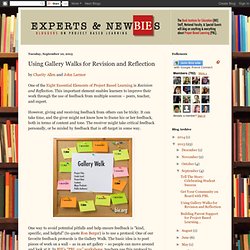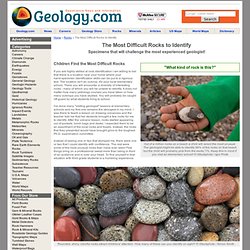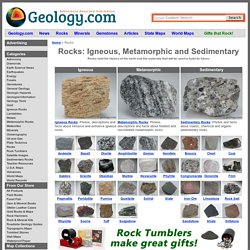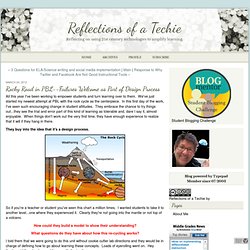

Search for Rocks and minerals: Elementary: Science: Grade 3 teaching resources. Search for Rocks and minerals teaching resources. Using Gallery Walks for Revision and Reflection. By Charity Allen and John Larmer One of the Eight Essential Elements of Project Based Learning is Revision and Reflection.

This important element enables learners to improve their work through the use of feedback from multiple sources – peers, teacher, and expert. However, giving and receiving feedback from others can be tricky. It can take time, and the giver might not know how to frame his or her feedback, both in terms of content and tone.
The receiver might take critical feedback personally, or be misled by feedback that is off-target in some way. One way to avoid potential pitfalls and help ensure feedback is “kind, specific, and helpful” (to quote Ron Berger) is to use a protocol. Our version of a Gallery Walk protocol doesn't take much time; it provides a structure for critique; and it levels the playing field, since participants are both givers and receivers of feedback. “I like how well the major products align with the Driving Question.” Using Gallery Walks with Students.
Pet Mineral project, mariana garcia, pbl. Rocks & Minerals. What is a Rock? Geological Society of America - Educational K-12 Teacher Resources. Geological Society of America - Educational K-12 Teacher Resources. The Most Difficult Rocks to Identify. Teachers Know About Student Specimens!

Guess what happened during my second visit to a K-12 classroom? Right! More difficult rocks. Upon questioning the students I learned that some of them were collected locally, some were collected on vacations and some were given to them by family members who live far away. The teachers who hosted my visits already knew about the types of rocks their students bring to school. If you are a K-12 teacher and your students bring specimens of confusionite to school, don't feel bad if you can't identify them.
Why Are These Rocks So Tough to Identify? A course in physical geology or petrology prepares you to recognize the most common rocks and a few more that have economic or environmental significance. You must examine the rock outside of its environment.The child usually can not provide a good location.You can not do special tests on the rock.You usually examine fresh, broken specimens but children bring rounded, often weathered specimens. Mineral-identification-chart. Rocks: Pictures of Igneous, Metamorphic and Sedimentary Rocks. Lapis Lazuli Lapis Lazuli - a metamorphic rock and the most popular blue opaque gemstone in history.

Tumbled Stones Tumbled Stones are rocks that have been rounded, smoothed and polished in a rock tumbler. Quartzite Quartzite a nonfoliated metamorphic rock composed almost entirely of quartz. Fluorescent Minerals Fluorescent Minerals and rocks glow with spectacular colors under ultraviolet light. Geology.com Store Gifts that Rock! Geodes Geodes look like ordinary rocks on the outside but can be spectacular inside! Trap Rock Trap Rock is a name applied to any dark-colored igneous rock used to produce crushed stone. Don*t Go To Jail Rock Collectors must know the rules before removing rocks from public and private property. Difficult Rocks Difficult Rocks Elementary students find lots of rocks that you will not be able to identify. Sand Grains A Grain of Sand Gallery of sand grains through a microscope by Dr. Sand Sand is a diverse material. Shale Siltstone. Failures Welcome as Part of Design Process.
All this year I've been working to empower students and turn learning over to them.

We've just started my newest attempt at PBL with the rock cycle as the centerpiece. In this first day of the work, I've seen such encouraging change in student attitudes. They embrace the chance to try things out...they see the trial and error part of this kind of learning as tolerable and, dare I say it, almost enjoyable. When things don't work out the very first time, they have enough experience to realize that it will if they hang in there. They buy into the idea that it's a design process. So if you're a teacher or student you've seen this chart a million times.
How could they build a model to show their understanding? What questions do they have about how this re-cycling works? I told them that we were going to do this unit without cookie cutter lab directions and they would be in charge of defining how to go about learning these concepts. How does the rock cycle work in a volcano? Rocks, minerals, and erosion PBL.